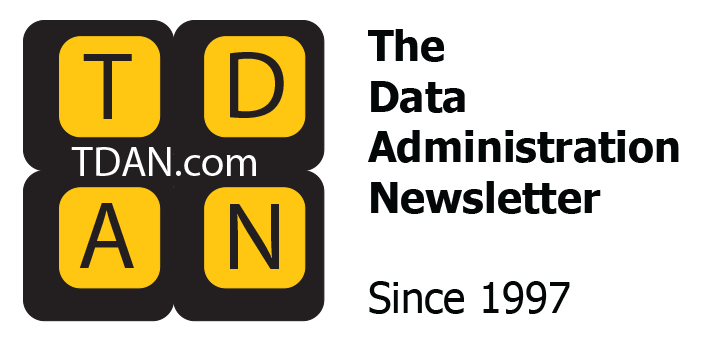
With the latest SEC developments lighting a fire under the feet of companies and their executives, data governance is increasingly a front-line imperative. The shift is dramatic, with firms now mandated to report material cybersecurity incidents promptly, a move that ties the knot even tighter between cybersecurity and data governance. As highlighted in the “Data Governance Gets a New Impetus,” this is not just a policy update, it’s a fundamental reshaping of the business landscape. Given this, a new category has emerged aimed at providing what is required together. Data security posture management provides the data needed to respond to this new SEC requirement. Let’s unpack the drivers that are powering this change and what it means to your data governance strategy.
Data Security Posture Management Drivers
In today’s data estate, the proliferation of data across cloud platforms and international borders has made data security a paramount concern. Yang Liang from Crowd Strike says, “In today’s digital world, where your systems, networks, and applications are all connected in the cloud, it is crucial to keep sensitive data safe.” This is especially important considering Verizon’s “2023 Data Breach Investigations Report,” which laid bare the reality of 5,199 confirmed data breaches out of 16,312 security incidents. This stark reality underlines the urgent need for technologies capable of unearthing hidden or dormant data repositories, assessing their exposure to risks concerning data residency, privacy, and security.
As organizations navigate the shifting sands of cloud-based data access, they confront immense challenges. While the cloud’s architecture fuels business innovation, it simultaneously spawns infrastructures and data repositories that are rarely used or obscured, and therefore vulnerable. Data can accumulate in neglected corners of the cloud for myriad reasons: infrastructure sprawl spurred by IT efficiencies, redundant backups, or isolated data created for testing purposes. With security teams charged with the herculean task of defending data across the board, it’s too easy for some repositories to slip through the cracks, uncatalogued and unprotected. This situation demands a rigorous and strategic approach to data risk assessment, an approach that systematically identifies and fortifies the security posture surrounding every byte of data, in particular those with a high volume of confidential or PII data.
Without question, the digital age has ushered in an era where data doesn’t just flow freely across cloud-based pipelines and global borders, often escaping the watchful eyes of security and data governance personnel. As CSP architectures drive innovation at warp speed, they also leave a trail of underutilized infrastructures, creating potential havens for unguarded data. The complex web of modern IT development, coupled with the inevitable creation of backups and test data, can lead to critical information being overlooked and unprotected. Security and data governance teams are thrust into the spotlight, tasked with safeguarding certain data realms, yet the expanse of data sprawl means sensitive spots may go unnoticed. The crux of navigating this labyrinth is a robust data risk assessment framework, which is essential to ensure a comprehensive and secure data governance strategy.
What Is Data Security Posture Management?
Data security posture management (DSPM) is emerging as the guardian of the cloud era, tasked with overseeing the whereabouts and safety of data. Its goal is to allow organizations to shine a light on dark data — unknown or unstructured information scattered across cloud platforms — and assess it against the backdrop of security and privacy risks. Oversight should extend through data’s journey across servers and nations, safeguarding an organization’s digital footprint against threats and ensuring it keeps pace with the evolving demands of regulatory compliance. Liang says, “Data security posture management plays a key role in this challenge, acting as a watchdog over where your data lives, how it’s secured, and who accesses it. DSPM helps organizations manage their data across the cloud, monitor for risks, enforce security policies, and ensure regulatory compliance.”
DSPM doesn’t just illuminate the shadowy realms of data, it also provides a blueprint for an organization’s data security policies, aligning them with business goals while minimizing risks. Security and risk management leaders can use them to identify security and privacy risks as data spreads through pipelines and across geographic boundaries. These technologies map out the cloud’s intricate landscape, locating data repositories within Infrastructure as a Service (IaaS) and Platform as a Service (PaaS) models, while scrutinizing the flow between and around them. With an ever-growing synergy with SaaS and IAM products, DSPM tools are sharpening the ability to discern which users access what data, turning the complexity of cloud infrastructure into a navigable and secure asset. This granular control is crucial, not only for pinpointing datasets, but for empowering a top-down data security strategy that secures every digital nook and cranny.
What is in the DSPM bucket? Data security posture management (DSPM) serves as a comprehensive toolset for organizations to balance their business objectives with rigorous security measures. It acts like a lighthouse, guiding companies through the murky waters of cybersecurity by defining robust data security policies and controls. This solution is not just about policy, it involves a proactive approach to creating data maps that pinpoint repositories and scrutinize the data flows connecting them. DSPM has an eagle eye for uncovering shadow repositories and unsecured data pipelines, as well as sniffing out misconfigurations that could leave data vulnerable to public exposure or unauthorized access.
DSPM technologies also extend their reach to manage user access across various SaaS platforms, ensuring only authorized eyes view sensitive datasets. This critical feature fosters a top-down assessment of how data security postures are upheld, allowing for a thorough defense strategy that aligns with the organization’s data governance framework. As DSPM evolves, it promises to provide organizations with the necessary oversight and control to protect their data infrastructure in an increasingly cloud-centric world.
What Does This Mean for Data Governance?
The advent of sophisticated tooling in data governance signifies a turning point for professionals in the field. It means that tooling is coming to make the role of data governance easier. The goal of data governance professionals has always been to manage data well. DSPMs promise to simplify the complexities of managing cloud data, addressing the growing imperatives of data privacy and security as cloud integration becomes ubiquitous. It’s about achieving finesse in data stewardship and ensuring compliance with tightening security regulations.
DSPMs (data security and privacy management systems) are at the forefront, aiming to empower governance frameworks. They are set to redefine the landscape by providing crystal clear visibility into potential vulnerabilities and policy deficiencies. Fixing this enables the implementing robust controls across ever expanding data realms, and streamlining the processes governing access, sharing, and accountability. Essentially, they become the cornerstone for future-proofing data governance infrastructures.
With these systems, organizations gain the insight to not only catalog and comprehend their data assets, but also to pinpoint and guard against vulnerabilities. The essence of DSPMs is their capacity to assure that data management adheres to the rigorous standards of today’s security policies, enabling precise control over access, permissions, and sharing, all under the watchful eye of performance auditability. This way data governance teams become the gatekeepers of the data domain, ensuring that what is out there is both visible and within the bounds of governance.
Parting Words
In this article, we’ve tackled the nuanced terrain of data governance in the age of cloud proliferation, underlining the essential role of DSPMs. These sophisticated tools are not just streamlining data management — they’re reinforcing the foundations of data privacy and security. By demystifying the data landscape, identifying potential risks, and ensuring robust policy enforcement, DSPMs empower professionals to navigate the complexities of data governance with confidence and precision.
